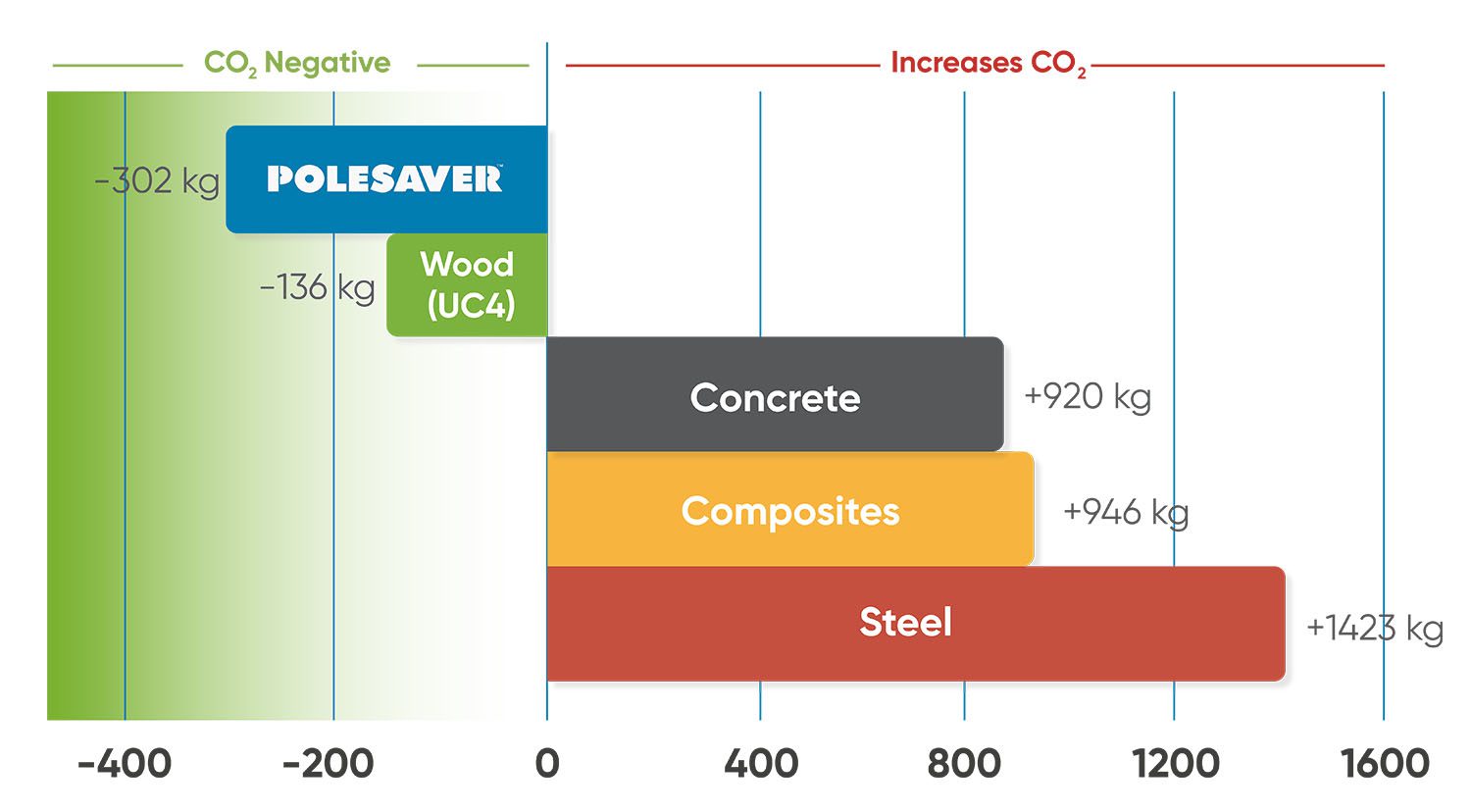Part of the planning for most infrastructure projects, including the installation of utility poles, is an evaluation of the impact any new structures will have on the existing landscape and its environment. This ranges from the upheaval caused by the construction in the short term to the effect the finished product may have on the environment well beyond its active life.

In the UK, Environmental Impact Assessments (EIA) and proposed mitigation measures can be the deciding factor whether or not planning permission will be granted. In the US, the least environmentally damaging practicable alternative (LEDPA) analysis considers factors such as terrain characteristics, land use patterns, ecological sensitivity, visual impacts and stakeholder preferences before a project can go ahead.
Utility poles are an integral part of critical infrastructure in every country across the globe. Millions of poles enable power distribution and communication over long distances, often across areas that have special environmental protection like National Parks, Areas of Outstanding Natural Beauty, World Heritage Sites and scheduled monuments. They will have an effect on the environment they are being erected in but any negative impact can be minimised with careful planning and material choice.
Wood, concrete, steel or fibre reinforced composite materials are the current material choices available for utility poles. Each option has its own advantages but, when it comes to minimising the environmental impact, wood has to be the preferred choice.

Arguments against wood often highlight concerns about the chemicals used for preservation. In response to these concerns, stricter environmental legislation is being implemented globally, including the upcoming ban on Creosote in Europe. The Polesaver sleeve offers a solution which seals the critical ground-line surface of the pole, which not only slows down deterioration by locking in preservatives, it also reduces leaching. This makes Polesaver-protected poles an environmentally friendly choice, particularly in environmentally vulnerable areas.
After 200 years, most utility poles worldwide are still made from wood. Today, there are between 160 and 180 million wood poles in the U.S. and 5 million of the estimated 7 million utility poles in Australia are wood poles. They blend into the landscape much better than the industrial looking alternatives. Made from a renewable resource, they are durable, recyclable and have a lower carbon footprint than any of the alternative materials.

The lifespan of wood poles, when pressure treated with a preservative to protect against rot, fungi and insects, is between 25 and 50 years, compared to 60 years for steel and 50 years for concrete. Combining traditional treatment of the wood with preservatives with the application of a protective sleeve like Polesaver can extend the lifespan of the wooden pole by 20+ years from the start compared to poles just treated with chemicals.
Polesaver is a leading manufacturer of wood pole life extension products and works with utilities globally. Get in touch to see how Polesaver helps meet your environmental targets.
Data Sources:
https://www.gov.uk/guidance/environmental-impact-assessment
https://en.wikipedia.org/wiki/Environmental_impact_assessment



This site is protected by reCAPTCHA and the Google Privacy Policy and Terms of Service apply.